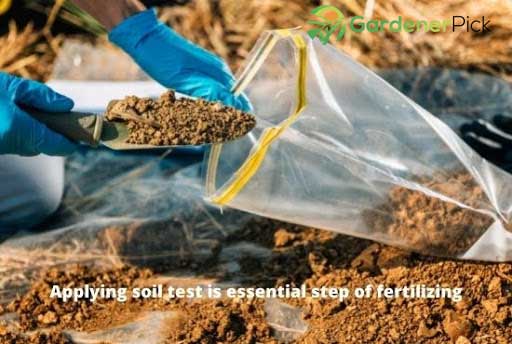Are you planning to grow pastures for your livestock? Wait— there is much you need to know first. Have you planned the grass species you want to grow in the pasture? Have you planned the forage requirement of livestock?
Have you planned land per acre for your pasture?
Have you planned a season to grow grass in the pasture?
If yes, it’s time to plan for fertilizer per acre.
To know this, reading this post is a must!
How much fertilizer per acre of pasture? The amount of fertilizer per acre of pasture depends on soil pH, species of grass or legume and time of application. For Kentucky bluegrass, you need 60 to 100 pounds of N per acre in April. For tall cool-season grasses, apply 80 to 20 pound of Nitrogen per acre. For warm-season grasses, apply 80 to 150 pounds of N per acre in late April to early May.
Similarly, the amount of P and K varies with the type of grass you want to grow. For growing mixed legumes, Nitrogen is not needed in additional amounts. Keep reading to know the general recommendation of N, K and P for fertilizing pastures.
Table of Contents
Factors to Consider Before Fertilizing Pasture
Pasture fertilization management is somehow different from field crops. It requires setting goals for production. Before fertilizing following factors are considered
1- Production Needed For Animals
Before fertilizing pasture, it is important to estimate how much production is needed for animals. For this, proper management of livestock is required. In developed countries, production estimation is made by considering the forage needs of animals. After estimating the production required, the fertilizer needs per acre are counted.
2- Timing Or Forage Needs
Another crucial factor to consider before fertilizing is the time of forage needs. For example in the breeding season forage needs of animals are different. According to the animal’s needs, pastures are planned. Season also impact the growth of certain forage species. So, it is important to consider the time, season and nutritional requirements of animals.
3- Grass Or Legume Species
The fertilizer requirement of different legume species is different. Before fertilizing it is important to consider which species you are growing actually. What is the nutritional requirement in terms of N, P, K of that particular legume?
4- Methods Of Fertilizer Management
Methods of production management vary with countries and climate. Pastures are systematically managed in developed countries by well-planned fertilization. Various production management programmes work in close collaboration to make the livestock industry profitable.
5- Soil Sampling In Pasture
Before fertilizing, soil sampling or testing is used to determine the need for N, P, and K. After testing soil, the amount of Nitrogen and K needed to add to cover the deficiencies is estimated. In soil testing, samples from different areas of soil are collected and tested in the laboratory for specific nutrient limitations. It is better to avoid taking samples from freshly urinated soil, dung patches and near water sources.
6- Soil PH and Liming
Soil PH is essential to determine soil acidity before fertilizing soil. Most forage crops of legumes in pastures grow when PH is 6.0. However, alfalfa and alfalfa-grass mixtures require high pH of 6.8 to 7.0. Liming or agricultural liming is a technique used to increase soil acidity when it is low. Liming is a profitable practice for establishing legumes in forage stands. To get better results, limestone is ploughed in the soil before 6months to a year of establishing pastures.

How Much Fertilizer Per Acer For Pasture: Fertilizing Pastures Recommendations
Depending on the type of pasture the amount of fertilizer per acre varies. Here we are going to discuss the amount of fertilizer needed per Acer of grass pastures and mixed legumes grass pastures,
Amount of Fertilizer Per Acre of Grass Pasture: Fertilizing Grass Pasture Recommendations
Grass needs Nitrogen more than any other nutrients. That’s why first priority should be given to the amount of nitrogen when fertilizing grass pastures. After considering solid PH, species of grass to be grown, and the amount needed for animals, amount of fertilizer per Acer is planned
How much Nitrogen To apply?
Studies have shown that grasses respond to N more quickly than any other nutrients. However, it will not be more profitable if K and P rates in fertilizer are insufficient.
Unfertilized Kentucky bluegrass pastures produce 0.5 to 1ton of dry forage per acre. By applying 100 to 150 pounds N per acre you can expect to reach 3 tins of dry forage and 250 pounds of live weight gains per acre.
Similarly, unfertilized tall grasses, orchid grass, tall fescue and reed canarygrass produce 0.75 to 1.5 tons of dry forage per acre. By applying 240 pounds N per acre annually, you can expect to exceed 3 tons of dry forage and 500 pounds of live weight gain from every acre.
A number of factors can also affect Nitrogen response in pastures. Such as:
- Soil type
- Soil pH
- Grazing methods
- Time and method of N application
- Temperature change yearly
What Is Proper Timing & Amount Of Nitrogen Application For Grass Pastures
When you fertilize your pasture with N you can expect to increase production in that particular season. Moreover, the time application of N will help you to extend spring grass growth up to early summer and fall pasture protection up to early winters.
Table of Annual N Application Timing For Grass Pastures
| Grass Type | Application Time | Nitrogen Amount (pounds) |
| Kentucky bluegrass | April: | 60 to 100 poundsof N per acre. |
| Tall cool-season grasses | April | 80 to 120 poundsof N per acre. |
| Warm-season grasses | late April to early May | 80to 150 pounds of N per acre. |
Studies have shown that split application of nitrogen is also efficient in improving production. It is also helpful to improve forage yield in the growing season.
Table of Nitrogen Rates in Split Application
| Grass Type Name | Season Of Application | Amount Of Nitrogen |
| Kentucky bluegrass | Aprillate springearly to mid-August | 60 to 80 pounds N per acre30 to 50 pounds N per acre;40 to 60 pounds N per acre. |
| Tall cool-season grasses | April:late springearly to mid-August | 80 to 120 pounds N per acre;40 to 50 pounds N per acre60 to 80 pounds N per acre. |
How much Potassium and Phosphorus to apply for grass pastures?
The amount of P and K depends mainly on soil test and expected nutrient removal from the fields. General P and T recommendations are given in the table below.
Table of Annual Phosphorus & Potassium Rate For Grass Pastures
| Soil Test Category | Bluegrass 205 (lb/acre) | Bluegrass K20 (lb/acre) | Tallgrass 205 (lb/acre) | Tallgrass k20 (lb/acre) |
| Very Low | 40 | 50 | 60 | 85 |
| Low | 30 | 35 | 40 | 65 |
| Optimum | 0 | 0 | 25 | 50 |
| High | 0 | 0 | 0 | 0 |
| Very High | 0 | 0 | 0 | 0 |
Amount of Fertilizer Per Acre of Mixed Legume Grass Fertilizer
How much Nitrogen to apply for mixed legume pastures?
If you are growing nodulated legumes, you need no additional N application. Because the nodules on legumes have the ability to capture nitrogen gas from the air. For forage stands with one third or more legumes no additional Nitrogen fertilizer is generally recommended.
Researches have shown that Nitrogen fertilizer despite one-third legume on the stand, can get high production. However, doing this can reduce the proportion of legumes and makes your pasture less profitable.
How much Potassium and Phosphorus for legume grass pastures?
Unlike grass pastures, legumes require a high rate of K and P. These two nutrients are essential to boost yield, maintain stands and be resilient to diseases. After testing soil, these nutrients should be applied to optimal levels.
The general recommendation for P and K for legume grass are given in the table
How Much Fertilizer Per Acre of Horse Pasture
Pasture management is essential to get a high yield of forage. It’s becoming very challenging because of changing environmental conditions. Without proper pasture acreage, it’s challenging for horse owners to meet the nutritional needs of horses.
Before fertilizing pasture, it is imperative to test soil samples. It’s also essential to test soil H for liming and fertilizing. Grass pastures for horses perform well in Ph of 6 to 7. After checking the acidity of the soil, liming is an essential step. It will improve acidity and hence the production of forage. After applying soil tests, determine the deficiency of nutrients of soil for sowing grasses.
Grasses require N more than P and K. It is because of Nitrogen that plants gain colour and vegetation. But Nitrogen is ineffective if K and P supply is inadequate. Applying too much Nitrogen at a time can affect animal and plant health. It’s better to go for split application of nitrogen according to timing and the needs of animals.
Generally, 50 pounds of Nitrogen application per acre in the early spring season is recommended for horse pastures. However, you can reduce Nitrogen application to 30 pounds per acre considering forage growth. The best time for Nitrogen application is spring or fall. Consider summer application if environmental conditions are not appropriate for plant growth.
How Much Fertilizer Per Acre Of Cattle Pasture
Cattle pastures may comprise different types of grasses. Depending on soil quality, PH and liming you can determine the amount of fertilizer needed per acre of cattle pastures. This amount varies with the acidity of the soil, time of application and type of grass.
For Kentucky bluegrass applying 60 to 80 pounds of N per acre in April is recommended. For late spring reduce this application rate of N from 30 to 5p pounds.
For tall cool-season grasses apply 80 to 20 pound of Nitrogen per acre. For warm-season grasses, apply 80 to 150 pounds of N per acre in late April to early May.
Only Nitrogen supply is not enough to boost yield, consider P and K addition as well. Nitrogen may not work well in the absence of P and K.
Moreover applying Nitrogen annually may require a high amount at one time. It may not be good for animal or plant growth. So go for split application of nitrogen
Here is the fertilizer recommended for grass pasture.
What is a Good Fertilizer For Pastures?
A good fertilizer for pasture depends on many factors such as grazing situation, grass species, application time and soil quality. For intensively grazed pastures, fertilizer recommendation for a legume-grass pasture with a yield of 4.1 to 5.0 tons of dry matter per acre is 60 pounds of P2O5 and 240 pounds of K2O.
How Much Fertilizer Do I Need For an Acre of Grass?
435 pounds of fertilizer with a 10 10 10 ratio of NPK is needed for 1000 square feet of grass. Depending on soil PH, soil type, and grass species you can increase or decrease the amount of fertilizer needed per acre. Generally, the recommended amount is 435 pounds per acre.
Can You Spread Fertilizer on Pastures with Cattle?
No, it’s not good practice to fertilize a pasture with cattle. It’s better to fertilize pastures in the absence of cattle. Fertilizers may cause poisoning when consumed by cattle. Poisoning of fertilizer is the same as the poisoning of nitrates.
Last Lines
We are about to end this informative post of fertilizer requirement per acre of pasture.
Simply, it depends on many factors. You need to test the soil first and then consider the grass species that you want to grow.
You can’t ignore the continually changing environment.
There are two options: annual fertilizing or split fertilizing. Later is more healthy for your plant as well as animal. Over-fertilizing kills. For better management of livestock, it’s important to manage pastures according to the forage needs of animals.





![How Long Does Sevin Dust Last? [Minimum Time For Working Fast]](https://gardenerpick.com/wp-content/uploads/2022/01/how-long-does-sevin-dust-last-250x150.jpg)
![What Do Inchworms Turn Into? [Life Cycle]](https://gardenerpick.com/wp-content/uploads/2022/07/What-Do-Inchworms-Turn-Into-250x150.jpg)